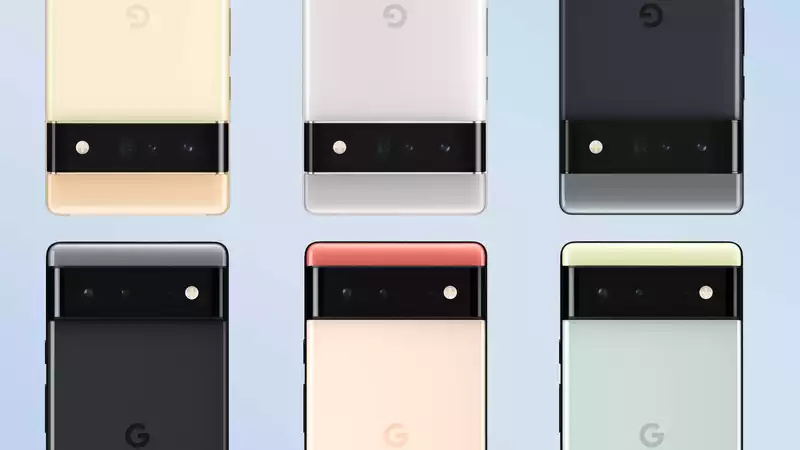With so many Google Pixel 6 leaks flying around, we still don't know what Google will show us at the Pixel event on October 19. But there are still a few key questions.
While the basic hardware that makes up the Pixel 6 and Pixel 6 Pro has been thoroughly leaked and in some cases officially revealed, questions still remain regarding the display, the new Tensor chipset, and face unlock. Furthermore, no one has yet been able to reveal what the phone actually feels like to hold and use.
According to recent leaks, the regular Pixel 6 will feature a 6.4-inch OLED display with a 90Hz refresh rate, a dual-lens rear camera with a 50MP wide lens and 12MP ultra-wide lens, an 8MP selfie cam, a 4,614 mAh battery, up to 8GB RAM and 256 GB of storage.
The Pixel 6 Pro, on the other hand, is said to feature a 6.71-inch OLED display with a 120 Hz refresh rate, a 5,000 mAh battery, a 12 MP selfie cam, up to 12 GB of RAM and 512 GB of storage. The rear camera is a 50MP, 12MP, and 48MP triple lens with 4x optical zoom.
Still, we have four points about the Pixel 6 series that we would like more definitive answers to. These may not be answered until the actual launch or hands-on with an actual device, but with any luck, more leaks may appear to fill in the blanks.
How big is it?
This is a minor point compared to the others on this list, but the size and weight of the Pixel 6 series is still unknown; measurements have been leaked for the Pixel 6 Pro (via Digit), but not for the Pixel 6, and reliable leaks we have seen information does not mention the weight of either phone.
Based on the Pixel 6 Pro's size (163.9 x 75.8 x 8.9 mm, 6.4 x 2.9 x 0.35 inches), it appears to be slightly taller and thinner than the iPhone 13 Pro Max, which also features a 6.7-inch display. However, the Pixel 6 Pro also has an 11.5mm (0.45") thick camera bump on the back; we won't know how easy the Pixel 6 series will be to hold and use until we hold it in our hands, but at least it resembles the devices we already know and love that stand up well to their size It seems certain that it will be similar to the devices we already know and love for their size.
What about 90Hz and 120Hz displays?
Google has already revealed that the Pixel 6 will have a 90Hz display and the Pixel 6 Pro will have a 120Hz display. These are interesting specs, but only tell half the story about how the displays will work.
Another important detail is how Google's new models will support these refresh rates. Either they will allow users to switch between low and high refresh rates, or they will be fully dynamic depending on the task.
Fully variable is arguably more impressive in practice and could theoretically save more battery life. However, this would require Google to use LTPO displays in their phones, an expensive component that Google has not yet implemented in their phones.
If Google were to make the display refresh rate fully variable, we imagine it would only do so on the Pixel 6 Pro, which has a higher maximum refresh rate and would benefit most from this system. Until further leaks, this is only an assumption.
What exactly can Tensor do?
Google has already been touting its first proprietary designed chip, dubbed Tensor, quite extensively. This new chipset will focus on AI and machine learning (ML) with the help of a dedicated Tensor Processing Unit (TPU), but so far there are only a few examples of how this will actually show up in the Pixel 6.
These include better photography of fast subjects, computed video processing, voice recognition, reactive widgets like the new Live Space widget, and live translation and transcription. New features will undoubtedly be added to Google Assistants as well.
However, none of these are special and are very similar to features already available on both Android and iOS. Otherwise, the claim that the Pixel 6 is "the smartest, most secure, personal phone ever" rings hollow.
How will face unlock work? And does the display have a fingerprint sensor?
Looking at the Pixel 6 body, we know that Google will not bring back the fingerprint scanner on the back. Therefore, it was assumed that Google would instead use a fingerprint scanner under the display. While that may be true, according to the appearance of the security menu options shown as part of a recent leak, there may also be facial recognition unlocking.
The Pixel 6 series has only one front camera, and that is what we know is a regular camera. Normally, to enable secure face unlocking, an IR sensor or similar would be needed to allow the phone to be opened only with a real face, not a photo. Thus, at first glance, it appears that Google is not offering face unlocking as a first line of defense, but as a convenient way to speed up unlocking, a secondary option, as many existing Android phones do.
Except for details from Mishaal Rahman of XDA Developers, which suggest that Google has been working on making secure face unlocking using a selfie camera a reality. As he delved into the Android 12 code, it appears that Google intends for face unlocking to be the primary unlock method, with the fingerprint system serving as a backup.
Since this is a software feature, it would be difficult to tell exactly what Google is doing here before the phone is released. However, it will be interesting to see if Google can successfully implement such secure facial recognition, as Apple's Face ID and the large notch required to make it possible will make it look unattractive by comparison.
.









Comments